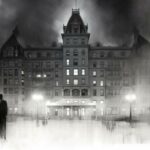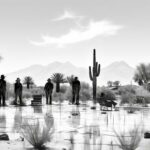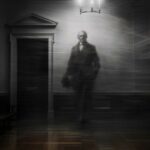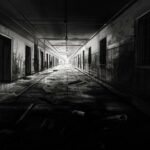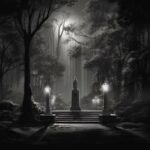Table of Contents
Houston beckons thrill-seekers and ghost hunters alike with its eerie collection of haunted locales, each steeped in spine-tingling history. Venture into the shadowy corners of the city to uncover chilling tales of restless spirits and unexplained phenomena. Bold visitors may explore these notorious sites, but they should prepare for encounters that defy explanation and haunt their memories long after leaving.
If you are doing any kind of paranormal investigation here, you might want to take a look at our ghost hunting equipment list. Locations like this get a reputation because they are high activity and you don’t need much to see for yourself.
Julia Ideson Building
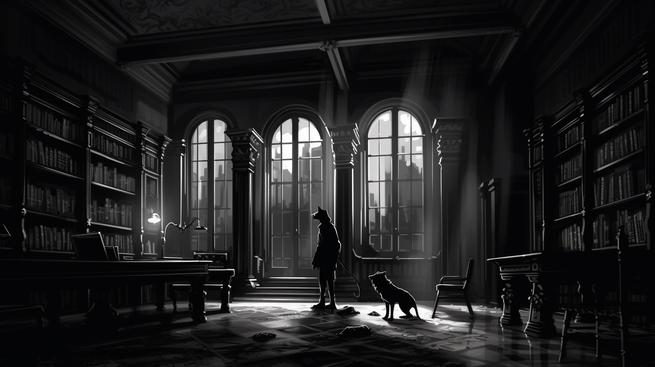
The Julia Ideson Building, nestled in the heart of Houston, carries with it whispers of the past, echoing through its grand halls and vaulted ceilings. This architectural jewel of the Houston Public Library system is said to be home to more than just books and artifacts; it is the abode of a timeless serenade. Patrons and staff report the haunting melodies of a violin, played by an unseen hand, and the soft patter of canine paws on the marble floors. These spectral sounds are attributed to the library’s loyal former caretaker, Jacob Frank Cramer, and his faithful German Shepherd.
Born to German immigrants in 1857, Cramer’s early life remains shrouded in mystery. After years of drifting as a railroad laborer, he laid roots in Houston in 1911. His tenure at the city’s Carnegie Library began in 1913, and he continued his service when the Julia Ideson Building opened its doors in 1926. Cramer’s devotion to this temple of knowledge was unyielding. He took residence in the basement apartment, becoming the guardian of its literary treasures.
Cramer’s love for music often had him fill the library’s corridors with the sounds of his violin, a detail that now feeds the legend. In 1936, Cramer’s song was silenced by death, but many believe his spirit never vacated the premises. The haunting strains of his music and the tapping of his dog’s paws are said to be perennial fixtures, a testament to his undying watch over the library.
Though the years have marched on, the echoes of Cramer’s dedication weave through the fabric of the Julia Ideson Building, a reminder that some stories refuse to be confined to the pages of history. Whether these occurrences are tricks of the mind or a genuine haunt, the library stands as a beacon to the curious, a place where history and mystery dance hand in hand.
I felt a chill run down my spine as the unseen violin played a haunting melody, echoing through the Julia Ideson Building’s grand halls. With every step, the soft tapping of a ghostly dog’s paws kept pace with me, as if the loyal spirits of caretaker Jacob Cramer and his German Shepherd still roamed the library’s corridors. These eerie serenades and phantom footfalls turned the pages of history into a living story, whispering that some bonds, not even death can sever.
Spaghetti Warehouse

Nestled in the heart of downtown Houston, the Spaghetti Warehouse at 901 Commerce has stirred up more than just its signature dishes. With a past steeped in history and mystery, this unassuming Italian eatery also serves a generous helping of ghostly tales. Originally built around 1912, the building’s walls have played host to a fruit and vegetable warehouse and later a pharmaceutical company before setting the stage for garlic bread and lasagna enthusiasts.
The most spine-tingling story linked to the Spaghetti Warehouse whispers of a young pharmacist who, in a tragic twist of fate, met his demise after tumbling down an elevator shaft. His wife, consumed by grief, followed him to the grave within a year. It is said that these star-crossed spirits have never left the premises. Guests and staff alike have reported floating objects and unexplained voices, particularly on the second floor, which is now a space for gatherings.
The restaurant is a cornucopia of antiques, including a venerable Houston trolley car, a chandelier with a past, and a grandfather clock ticking through time. Some believe that these relics act as anchors for the spirits, keeping them bound to the physical world.
Skeptics might wave off these eerie occurrences as mere figments of the imagination, but those attuned to the paranormal might argue it’s more than just a case of seeing through a glass darkly. One employee has even claimed that her shoelaces are often mysteriously untied while working upstairs—a potential spectral prank.
While some naysayers propose that these ghostly tales are nothing but a clever ruse to drum up business, the stories have woven themselves into the fabric of the Spaghetti Warehouse, making it a must-visit for thrill-seekers and history buffs alike. Whether the hauntings are reality or simply a brilliant marketing ploy, the Spaghetti Warehouse’s haunted history remains an integral thread in Houston’s colorful tapestry.
I was dining at the Spaghetti Warehouse when, out of the blue, my fork levitated above my plate, as if held by an invisible hand. Later, while exploring the second floor, I heard hushed whispers with no visible source, sending shivers down my spine. They say these walls have ears, but I never imagined they might have ghosts, too.
Hotel Icon
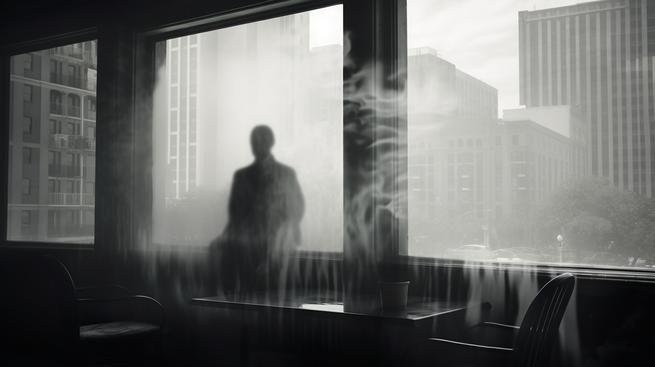
In the heart of downtown Houston, the Hotel Icon stands as a grand testament to the city’s historical wealth and splendor. Erected in 1911, the structure originally housed the Union National Bank and for a brief moment claimed the title of the tallest building in Texas. With its Greek-inspired architecture, complete with Doric columns and Corinthian pillars topped with busts of Hermes, the god of commerce, the building signaled prosperity and economic triumph.
Yet, beneath the marble and opulence, the Hotel Icon harbors a darker narrative, one that whispers of financial turmoil and spectral residents. The 1929 stock market crash, a thunderclap that heralded the Great Depression, marked a turning point in the building’s storied history. The once bustling bank and its upper-floor offices, which were a beehive of activity, became a symbol of shattered dreams. As the market spiraled, so too did the fortunes of those tethered to the Union National Bank, leading some to take their own lives within the building’s walls.
Today, guests at the Hotel Icon may encounter echoes of this tumultuous past. Accounts of phantom gunshots and the chilling sensation of an unseen presence in their rooms have been reported. Some even speak of witnessing a man in a 1920s business suit, perched on a windowsill, before taking a fatal plunge—a grim replay of desperation from days gone by.
Despite its brush with bankruptcy and the specter of financial ruin that once loomed over the building, the Hotel Icon has been revitalized, marrying its historic charm with modern luxury. A $35 million overhaul in 2004, followed by an additional $1 million renovation in 2011, breathed new life into the space. Now, guests are treated to the comforts of the upscale Line & Lariat Restaurant, a relaxing onsite spa, and a menu of indulgences that cater to every whim.
The Hotel Icon remains a glittering jewel in Houston’s crown, a place where history and luxury intertwine. Whether drawn by the allure of its haunted tales or the promise of contemporary elegance, visitors can’t help but be captivated by this architectural marvel that stands as a monument to the city’s rich, albeit sometimes spectral, past.
I felt my blood run cold when, out of the corner of my eye, I caught the fleeting glimpse of a man in a 1920s business suit staring out the window on the tenth floor, the very spot where despair once took a fatal leap. Every hair on the back of my neck stood up as phantom gunshots echoed through the hallways, a stark reminder of the building’s tragic history. They say some guests check out in the dead of night, swearing the echoes of the past are too loud to bear.
Elder Street Artists Lofts (Jefferson Davis Hospital)
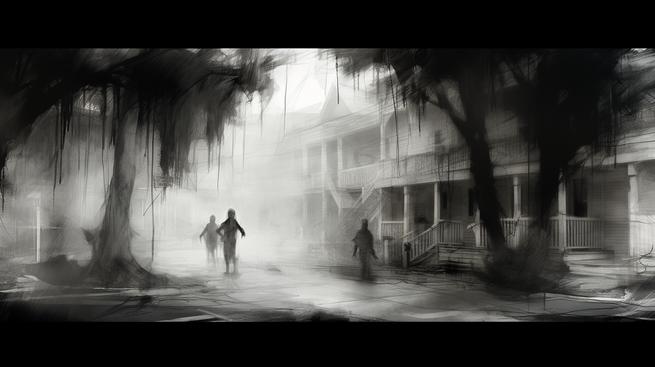
The Elder Street Artists Lofts, formerly known as the Jefferson Davis Hospital, stands as a towering reminder of Houston’s eerie past. The historic structure carries within its walls the whispers of a time gone by when the sick and wounded once roamed its halls. Built over an old cemetery dating back to the 1800s, the grounds are said to be the final resting place for nearly 3,000 souls who succumbed to the perils of the Civil War and the ruthless grasp of yellow fever.
Before its transformation into lofts, the hospital was rife with tales of the paranormal. Staff and visitors alike reported chilling encounters with the unknown. Shadowy figures would flit across the periphery of one’s vision, vanishing when confronted. The eerie sensation of unseen eyes watching your every move was a common occurrence, leaving an unsettling chill in the air. Even more haunting was the inexplicable scent of sterilization products that lingered without a source, a stark reminder of the building’s medical history.
The lofts now stand as a creative sanctuary for artists, but the question lingers like a ghostly specter: do the spirits of the past still tread the creaking floorboards of the Elder Street Artists Lofts? While the building has been given a new lease on life, the echoes of its haunted history continue to resonate through the heart of Houston.
I felt the hairs on the back of my neck stand up as I wandered through the Elder Street Artists Lofts, the ghostly whispers of its former life as the Jefferson Davis Hospital nipping at my heels. In the dead of night, I caught a fleeting glimpse of a shadow darting into an empty room, leaving me with the eerie feeling that the past was still alive and kicking within these walls. The unmistakable scent of antiseptics hung in the air, a phantom trace of the hospital’s bygone era that sent shivers down my spine.
Patterson Road Bridge
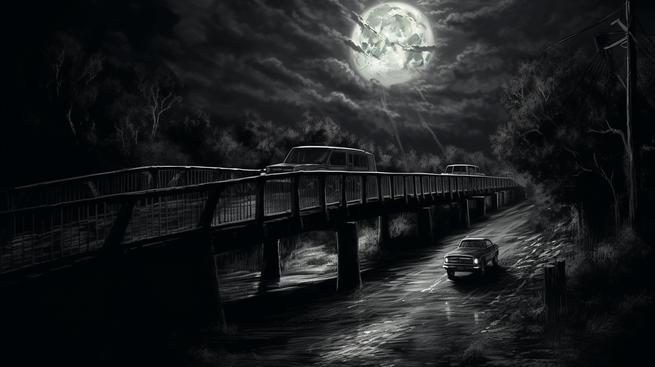
The Patterson Road Bridge in Houston, Texas, carries with it a reputation as haunted ground, steeped in the tragic history of the Civil War. This particular site is said to be a hotbed for paranormal activity, with numerous accounts of eerie encounters that have solidified its status as a destination for thrill-seekers and ghost hunters alike.
According to local lore, the bridge is an infamous landmark where the echoes of the past manifest in tangible experiences for those who dare to visit. It is believed that the spirits of fallen soldiers linger around the bridge, unable to find peace after the bloody conflict that claimed their lives.
Those brave enough to venture onto the Patterson Road Bridge after dark report a multitude of spine-chilling occurrences. It’s said that a drive across the bridge can provoke all five senses of the spectral inhabitants. Witnesses have recounted sightings of apparitions standing solemnly by the roadside, as if keeping watch over a land that once soaked up so much blood and sorrow.
But the ghostly encounters don’t stop at mere visual manifestations. Many have reported feeling the unmistakable sensation of hands tapping on their vehicles as they pass. Some visitors have even stopped their cars right on the bridge, turned off the headlights, and waited in the silence of the night. In these moments of stillness, they claim to hear the sounds of knuckles rapping against the car doors, an eerie form of contact that hints at the restless spirits reaching out from beyond the veil.
The pervasive feeling among those who’ve experienced Patterson Road Bridge is one of unwelcomeness, a sense that the spirits harbor resentment towards the living who disturb their eternal watch. For those with a streak of adventure or a curiosity for the paranormal, a trip to 14349 Patterson Rd, Houston, TX may be a chilling addition to their bucket list. However, they should be warned: the bridge’s phantoms are said to be most unforgiving to those who intrude upon their haunted domain.
I drove to Patterson Road Bridge one pitch-black night, and as I crossed, a sudden chill crept up my spine. Out of the corner of my eye, I caught glimpses of shadowy figures standing guard like sentinels of the past. The moment my car came to a stop in the heart of the bridge, a symphony of ghostly knocks on the windows played, leaving me with no doubt that I was not alone.





